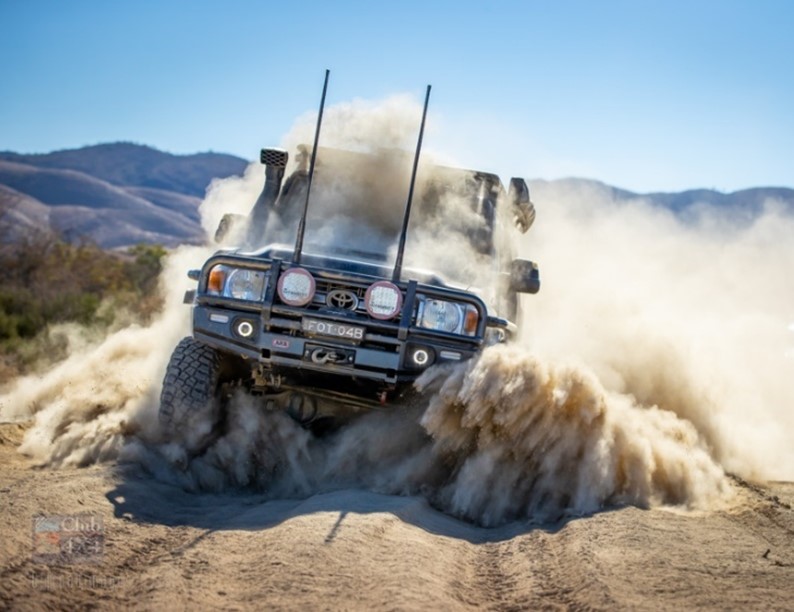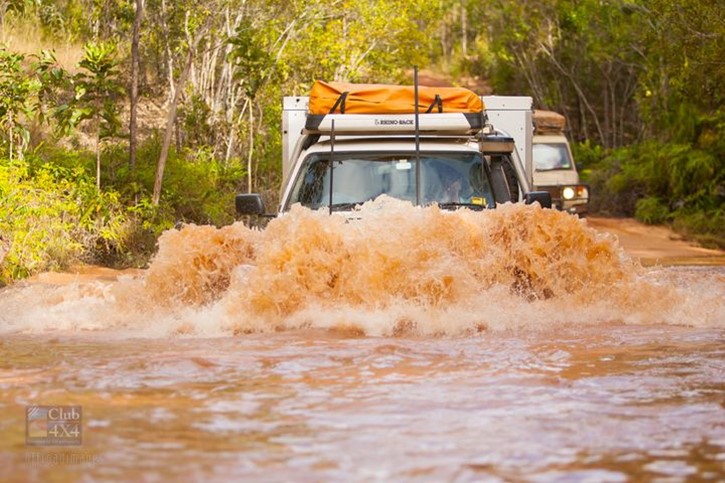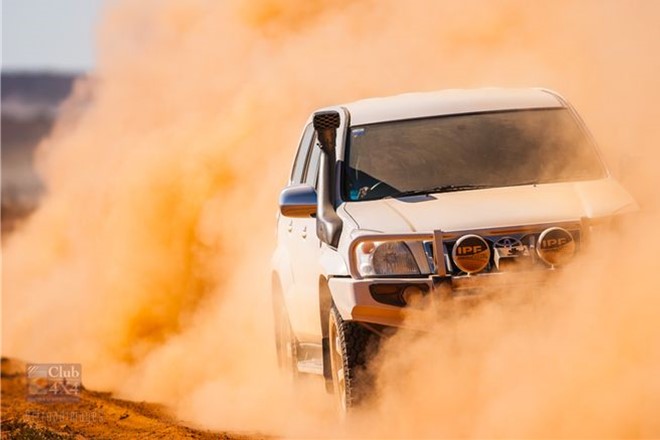This (edited) article by Michael Ellem first appeared in Club 4X4 Campfire, 9 February 2024
A snorkel is one of the best investments you will add to your 4WD. Whilst most people think you only need a snorkel if you are heading through deep water crossings, a good quality snorkel can be critical to assist in your travels and expectations of long service life from your 4WD engine.

A 4WD is a significant investment for anyone and I think that any purchaser would want to ensure they look after their major investment.
Relating to this major purchase, the engine in most of these vehicles is probably one of the most expensive components of the purchase price and, therefore, is the one item you really should ensure you look after well.
On regular bitumen roads, vehicles could travel for their full-service interval and still have a clean air filter. For the 4WDer, if you are using your vehicle for its intended purpose of accessing off-road areas, you are bound to be driving on dusty roads. Most 4WDs have the air intake system pulling air for the engine from the inner guard or around the engine bay area. If you haven’t noticed, this is an extremely dusty environment, and the likelihood you are getting clean air for your engine would be quite slim.
Whilst in many of the new vehicle designs, there has been a push for the air intake to be right up front of the engine bay, at the top of the grill, there really needs to be some consideration as to how effective this location is for air entering your engine. Is this new location more prone to effectively gulping water during a water crossing, or bull dust as you puff up dust in front of you on a slower track.
The better way of ensuring an engine gets clean air is to be running a snorkel.
Whilst most people think you only need a snorkel if you are heading through deep water crossings, I would like to explain here how important a good quality snorkel can be to assist your travels and expectations of long service life from your 4WD engine.
Snorkels, like any modification, come at a price.
Obviously, without a snorkel, a trip to Cape York could be a problem. Lined up at one of the various creek crossings and seeing others getting stuck can make people a little anxious. By the time their turn comes around, they might hit the water a little hard, ensuring they don’t become one of the recovered wet vehicles. This will test your snorkel’s design for sure.
Some models of 4WD are equipped with what appears to be a snorkel. An example of a raised air intake is seen in the Landcruiser 79 Series and certain models of the Landcruiser 300 Series, featuring a plastic two-piece design. This two-piece construction is connected by a thin piece of foam, reminiscent of what you might use to seal a window frame against drafts. Hence, we classify them as raised air intakes rather than snorkels.
A high-quality snorkel should reliably draw in clean air and maintain a 100% watertight seal below the air intake point.

In normal vehicle use, air is introduced through your air intake as you drive, passing through to an airbox, through an air filter, and into the engine, where it mixes with fuel to perform normal engine operations. A standard OEM filter is designed to collect dust and potentially debris like bugs, providing clean air through to the engine.
It’s amazing sometimes, the number of bugs you might find in your airbox. These filters are designed to capture any fine dust and debris effectively, cleaning the air as it passes through to the engine, and keeping you traveling down the road.
We could talk a lot about better filtration systems like aftermarket air filters and airboxes, but the most important thing to realize here is that there is only so much a good quality filter system can do before you might run into trouble.
Let’s talk about what happens to your vehicle if you are to suffer from excessive dust ingress.
Air filters can only do so much before things get bad.
If dust passes through or around a filtration system and makes its way to the engine, over time, extensive damage may result. Dusting an engine could lead to a complete engine rebuild, with the debris gradually wearing away the pistons and rings, creating a catastrophic failure in the engine.
Another simple problem that might present trouble for you out on the track is the error codes being sent back to the engine management system. Dirty air passing through to the engine will dirty the MAP sensor, which measures “Manifold Absolute Pressure”. This sensor is situated after the air filter and continuously reads the air in the air intake. If this sensor becomes dirty or dusted, it will relay incorrect information. At the minimum, you might find the engine light coming on, which will likely make you nervous on a remote trip. However, a dirty MAP sensor could result in engine malfunctions, including sending the engine into limp mode. This would be highly inconvenient on a remote track, potentially leaving you stranded.
So, what’s the solution to these potential problems?
Creating a cleaner path for the air pick-up is essential to ensuring a vehicle engine will have the best chances of performing at its best and providing long service life. The use of a raised air intake will greatly assist in providing a better path to cleaner air. Most quality snorkels will do exactly this.

But remember, do everything you can to keep out of other vehicles’ dust. This might mean the convoy you are driving in is further extended, but it’s just not worth driving in thick dust and risking dusting up your engine.
So, you might not plan to head out on an adventure where you are driving through deep water crossings, but with the addition of a quality snorkel, at least you will know that your vehicle is being protected from dust ingress as you drive down a dusty road. And in the event that you do hit a water crossing a little hard, your vehicle will be protected from water as well.